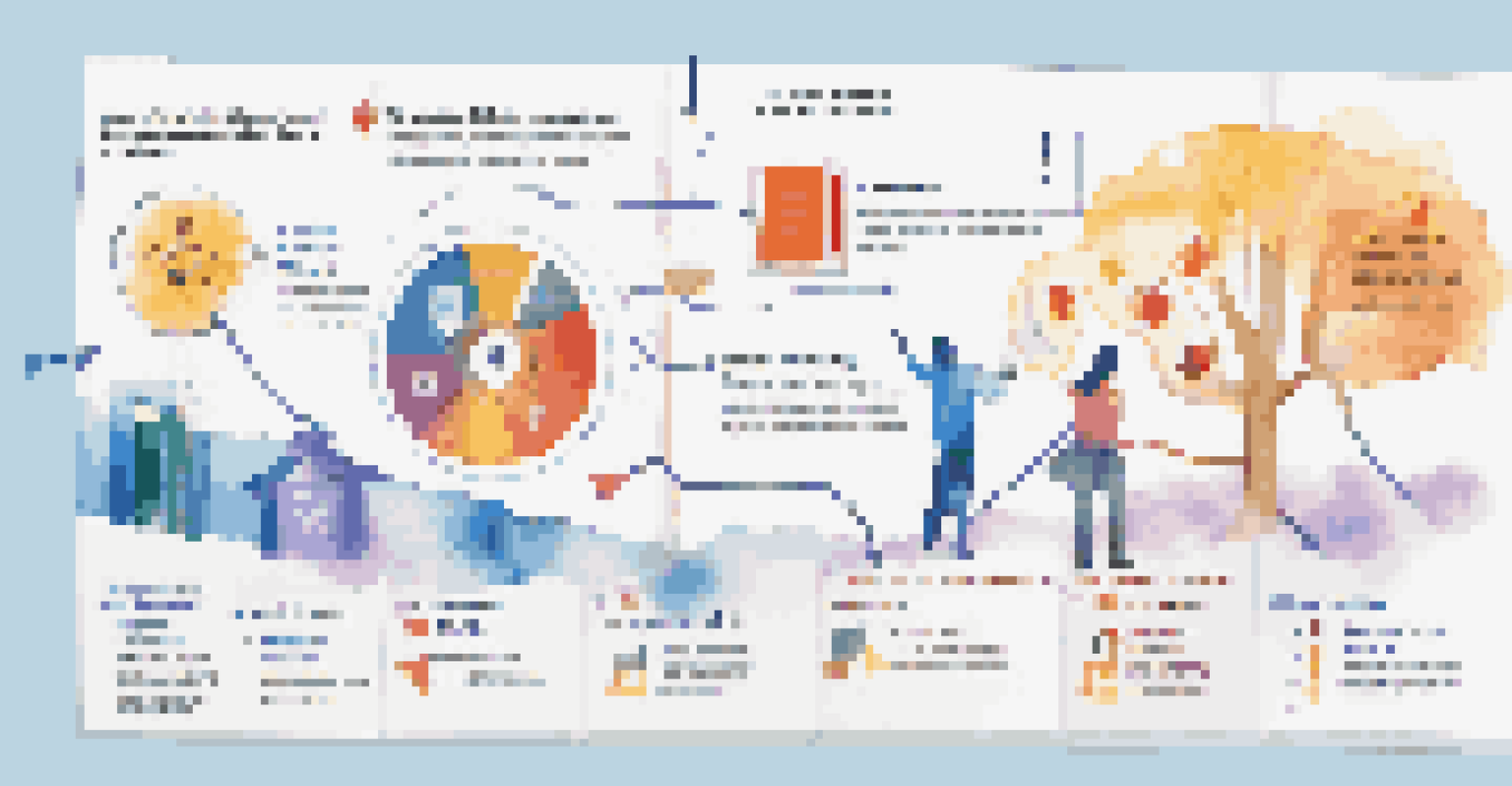Learning Analytics and its Role in Enhancing Teacher Feedback

Understanding Learning Analytics in Education
Learning analytics refers to the collection and analysis of data related to learners and their contexts. This data can come from various sources such as learning management systems, assessments, and even classroom interactions. By examining this information, educators can gain insights into student performance and learning behaviors.
Data is the new oil. It’s valuable, but if unrefined it cannot really be used.
The primary goal of learning analytics is to improve the learning experience. It does this by providing actionable insights that help teachers tailor their instruction to meet the needs of individual students. Think of it as using a GPS for education; just as a GPS guides you through the best route, learning analytics guides teachers in navigating their instructional strategies.
In essence, learning analytics offers a more data-driven approach to teaching, allowing educators to make informed decisions that foster student success. With this technology, teachers are better equipped to identify learning gaps and adjust their feedback accordingly.
The Importance of Feedback in the Learning Process
Feedback is a critical component of the learning process, serving as a bridge between teaching and understanding. It helps students recognize their strengths and areas that need improvement, which is essential for their growth. Without effective feedback, students may struggle to grasp concepts or lose motivation.

In an educational context, feedback should be timely, specific, and constructive. For example, instead of telling a student, 'You need to do better,' a teacher might say, 'I noticed you struggled with this concept; let’s review it together.' This specific approach not only guides students but also encourages a growth mindset.
Learning Analytics Improves Education
By analyzing data from various sources, educators can tailor their teaching strategies to enhance student learning experiences.
By leveraging learning analytics, teachers can provide more personalized and targeted feedback. This allows them to focus on what each student needs, making the feedback process much more effective and engaging.
How Learning Analytics Enhances Teacher Feedback
One of the most significant benefits of learning analytics is its ability to provide teachers with real-time data on student performance. This means educators can quickly identify who is struggling and who is excelling. With this information, they can adjust their feedback to be more relevant and timely.
The best feedback is not just a comment on what students did wrong, but a conversation that helps them understand how to improve.
For instance, if a teacher notices that several students are consistently underperforming in a specific area, they can address this immediately rather than waiting for the end of a term. This proactive approach not only helps struggling students but also helps improve overall class performance.
Additionally, learning analytics can help teachers refine their feedback methods. By analyzing patterns in student responses, educators can determine which types of feedback are most effective, leading to improved communication and understanding.
Creating Personalized Learning Experiences
Learning analytics empowers teachers to create personalized learning experiences tailored to each student’s needs. By understanding individual learning patterns, educators can modify their teaching strategies to better align with how each student learns best. This personalization leads to more effective teaching and learning outcomes.
For example, if analytics indicate that a student thrives with visual aids but struggles with traditional lectures, the teacher can adjust their approach. Providing more visual resources or interactive activities can significantly enhance that student’s understanding.
Feedback Drives Student Growth
Timely and specific feedback, informed by learning analytics, helps students recognize their strengths and areas for improvement.
This tailored feedback not only engages students but also builds their confidence. When learners see that their unique needs are being met, they are more likely to take ownership of their education and strive for improvement.
Facilitating Better Communication Between Teachers and Students
Learning analytics also enhances communication between teachers and students. With data-driven insights, teachers can initiate conversations that are more meaningful and focused. This creates an environment where students feel more comfortable discussing their challenges and successes.
For instance, a teacher might use analytics to show a student their progress over time. This visual representation can spark discussions about what strategies worked well and what changes might be necessary moving forward. It shifts the focus from grades alone to a more comprehensive view of learning.
By fostering this open dialogue, both teachers and students can work collaboratively towards improving educational outcomes, making the learning experience more enriching for everyone involved.
The Role of Technology in Learning Analytics
Technology plays a pivotal role in the implementation of learning analytics. Various tools and platforms collect and analyze vast amounts of educational data, making it accessible to teachers. This technological support is essential for educators to harness the full potential of learning analytics.
For example, platforms like Google Classroom or Moodle provide analytics dashboards that allow teachers to track student engagement and performance. These tools simplify the process of gathering and interpreting data, enabling educators to focus on what truly matters: teaching.
Personalized Learning Engages Students
Learning analytics allows teachers to customize educational approaches, fostering a more engaging and effective learning environment.
As technology continues to evolve, the capabilities of learning analytics will expand, offering even more sophisticated insights into student learning. This evolution will further enhance the feedback process, creating a more dynamic and responsive learning environment.
Challenges and Considerations in Learning Analytics
While learning analytics offers numerous benefits, it’s essential to recognize the challenges that come with it. Data privacy and security are significant concerns, as schools must ensure that student information is protected. Educators need to be trained on how to use analytics responsibly and ethically.
Additionally, there may be resistance from some educators who are accustomed to traditional teaching methods. It's crucial to provide support and professional development to help them understand the value of integrating analytics into their feedback practices.

By addressing these challenges, schools can create a supportive environment where learning analytics can thrive, ultimately enhancing the educational experience for both teachers and students.